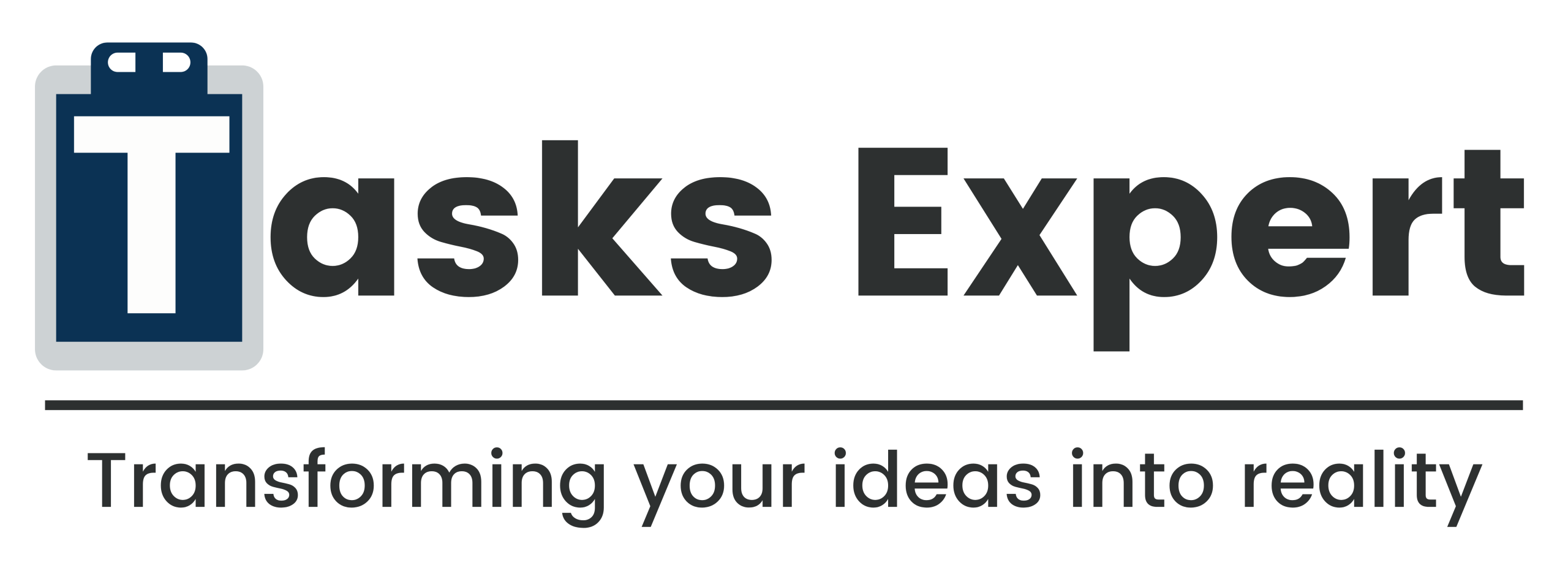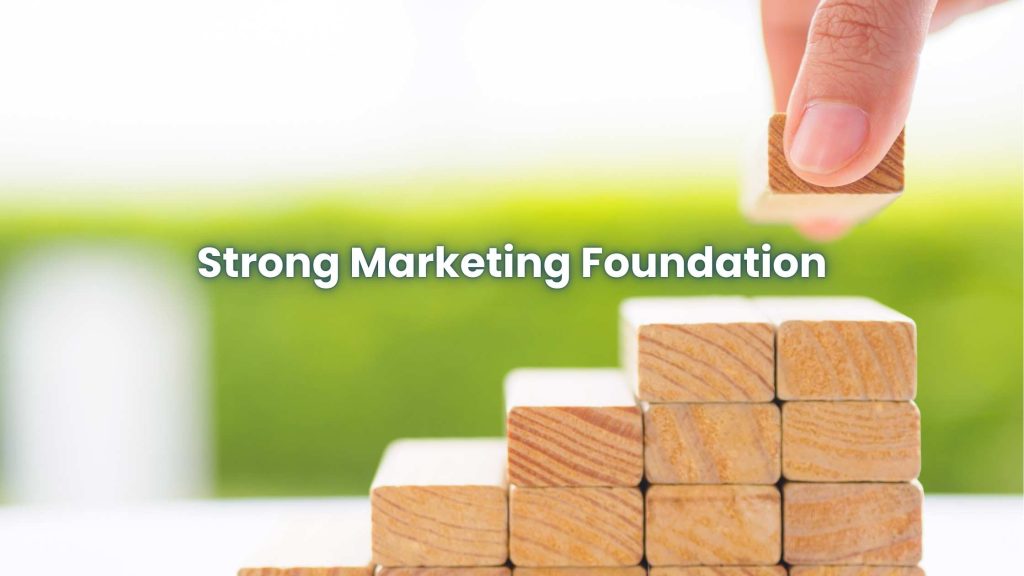Introduction
Marketing is more than just eye-popping campaigns or viral posts. It’s about forming personal relationships with your audience, providing value, and earning trust over time. Many businesses jump into advertising or creating content without establishing a strong marketing foundation. The result? Lack of coherent messaging, ineffective branding, and engagement.
A solid foundation provides a strong Marketing Foundation and ensures that every piece of communication is consistent with the business values and objectives. It also serves as a guide for your campaigns, simplifying the planning of content, budget, and performance evaluation.
Other companies that skip upfront work never achieve brand recognition, or are looking at an audience that isn’t even in the same time zone, or cannot create relevant content. Foundational principles — such as clearly defining your audience, identity, and goals — serve to prevent this from happening and ensure that every marketing action has a purpose.
And if your marketing is well-founded, it will be easier to pivot due to trends or shifts in your sector. You’re not going back to zero—you’re pivoting execution but still grounded in strategy. Whether you’re launching new products, expanding into new markets, or going through a rebrand, having a robust framework for marketing ensures easier transitions and continued success.
Going back to marketing basics can give any company, startup, or business a foundation for long-term success. With that in mind, this blog will discuss the fundamental principles that lie at the heart of a good marketing strategy.
Why You Should Have a Rock-Solid Marketing Foundation
When new marketing tactics arise nearly every day in the business sector, it is easy to be lured into chasing the next shiny thing. However, without a solid foundation, these efforts add up to unorganized messaging, bad customer engagement, and wasted time and money. Building successful marketing strategies helps to ensure consistency, alignment with your business goals, and clarity in your brand voice.
So when you have strong marketing foundation, marketing is grounded in time-tested principles. Knowing your customer, providing real value, and setting specific targets you are not simply responding to the landscape. But you are proactively engaging with a blueprint. Scalability is only possible with a solid foundation. A clear marketing structure means that whether launching a new product, entering a new market, or scaling, you won’t be reinventing the wheel every time.

Furthermore, you can use fundamental marketing principles to evaluate new opportunities. Rather than pursuing shiny objects, you can consider them based on your core strategy. This also reduces risk and leads to better decisions.
During uncertain market conditions or budget cuts, organizations with strong marketing foundations can quickly change course without losing their brand identity. They’re able to adapt more readily because they know what their brand represents and who their audience is.
After all, strong foundations don’t only lend to better marketing success; they lend to better businesses. So let’s dig into the foundational building blocks and how to construct those.
Also Read: Virtual Assistant Services in Utrecht
Get to Know Your Target Audience
For starters, know who you’re speaking to. Even the greatest campaigns will die unless they are designed with your audience’s pain points, interests, behaviors, and preferences in mind.
Getting a grip on your audience enables you to walk in their shoes and answer them on their level. When you take some time to determine your ideal customer, you’re not creating a profile; you’re designing a plan for your content, your messaging, and your entire marketing strategy. This foundation guides every element of how you communicate with your audience, what platforms you use, the offers you make, and even the emotional hot buttons that you push.
Understanding your audience also enhances customer retention. By understanding your audience, they are more likely to trust and end up falling in love with your brand. This is how they create word-of-mouth referrals and organic growth.
Openness to new concepts should guide your understanding. Update your buyer personas and insights as needed with feedback, trends, and analytics. Having accurate data means better targeting and greater cost-effectiveness in your marketing.

Key Actions:
- Build out buyer personas
- Track behavior with analytics tools
- Survey and interview
- Engage in existing forums or social spaces that the target audience frequents
When you know who your target audience is, you develop more targeted messaging, relevant content to address their needs, and more appealing offers.
Establish a Clear Value Proposition
What differentiates your business from the others? What do you have that others do not?
Finally, craft and polish your value proposition and ensure it is crisp, clear, and customer-oriented. It should address the “What’s working for me?”
Your (USP) unique value proposition is the foundation of all your communication. You just say you’re the best, and your audience must know about it. A good value proposition connects the dots between the challenge your customer is experiencing and the solution you present.
Clarity is essential. Steer clear of jargon and vague promises. Avoid jargon and use language that reflects the way your customers talk about their problems. An excellent value proposition is quick and to the point and answers the transformation your audience wants.
Besides, what makes you, you? Think about where your value proposition is found. It needs to be front and center on your website homepage, landing pages, marketing content, and social media bios.
Above all, maintain an adaptable value proposition. Your messaging should be adaptable as customer needs change. Always test again and tweak accordingly until you’ve got something that transcends your current offerings.

Key Actions:
- Understand your key strengths
- Focus on benefits along with features.
- Resolve the major issues
- Use real customer language
The essence of every marketing message you will ever create is a strong value proposition.
Establish a Cohesive Brand Image
Branding is not limited to a logo or a color palette. It is how people see your business. Consistency builds trust.

Brand identity:
It is how your business reflects a certain character in the world. This way includes your visual appearance, tone of voice, values, and the emotions that you bring out in your audience. Creating a cohesive and memorable brand that people will recognize with every interaction with your business.
Consider some of the most successful brands:
Like Apple, Nike, or Coca-Cola. It’s not just the products that set them apart but their consistency in how they show up in ads, packaging, websites, and even customer service. This consistency creates familiarity and loyalty.
Your mission, vision, and values:
These are the pillars of a strong brand identity. Next, create some visual rules, like how to use the logo and what types of typography, color palettes, and imagery they want to have in their universe. Also crucial is a verbal identity—your tone of voice, the key messages you repeat.
When your brand looks and sounds the same all over, it reinforces your professionalism and also builds credibility. The more they see you and hear about you, the more familiar your name becomes to them, and the more likely they are to trust you.
Key Actions:
- Create brand guidelines (tone, visuals, values)
- Engage with audiences consistently
- Bring your brand to life on your website, social media, and emails
This cohesive brand identity instills credibility and allows your audience to identify and recollect you.
Also Read: Virtual Assistant Services in New Zealand
Create Valuable Content
It is content that forms the link between your brand and your audience. It informs, inspires, entertains, and converts.
In the digital world, content is more than words—it’s your voice, your story, and your main engagement tool. If you’re running a blog, a YouTube channel, or a social media account, each piece of content has to provide real value.
Good quality content doesn’t happen in a vacuum. This begins with knowing the questions, difficulties , and goals of your audience. Your job is to be the solution, to help them see the light, get results, or find inspiration. And that’s how you gain trust and establish yourself as an authority in your niche.
By altering what format your content is in, you can attract different parts of your audience. Some might want quick tips on Instagram, others detailed how-to guides in a blog post. This makes it far more efficient and expands reach by turning the content into multiple formats.
Scheduled and consistent updates improve your SEO, establish your business as a reliable resource, and make readers more likely to come back. Most importantly, it means you can develop a relationship with your audience and ask for what you want later on.

Key Actions:
- Make developing a content strategy based on your objectives your first step
- Solve the problems your audience has
- Blogs, videos, infographics, podcasts, etc.
- Update content regularly and eliminate outdated information
And, if you’re providing real value, you start to gain trust—and trust is the cornerstone of customer relationships.
Use the Right Channels
Not all platforms are made equal. Opt for the marketing platforms and channels through which your target audiences are most engaged and which suit your message the best.
While expanding to every available channel sounds good on paper, it usually ends up with diluted messaging and wasted budgets. Instead, lean into where your audience is already hanging out. Intercede with them where they’re at, not where you want them to be.
There are different user behaviors, different tones, and content preferences on each platform. What succeeds on LinkedIn will not necessarily succeed on TikTok. Likewise, email marketing is typically better than social media for B2B audiences. This allows you to formulate strategies better suited to the type of channel being used.
Don’t rely on assumptions. Review analytics from previous performances and trial various platforms until you discover the one that can return the best ROI. And double down on the ones that reliably provide results.
Brand consistency across channels is crucial, too. Even if the format is different, your key message and identity should stay consistent. When done correctly, a multichannel presence helps strengthen your brand and improve visibility.

Key Actions:
- Determine which platforms performed the best based on historical data
- Limited trials of new channels
- Ensure the content format is in line with the platform behavior
Whether email, SEO, social, PPC, etc., spend your time where you’ll get the biggest payoff.
Set Measurable Goals
What does success in your marketing look like? Goals help you remain centered, and goals serve progress and ROI better.
Without specific goals, it’s hard to gauge what’s working and what isn’t. Having clear and measurable goals gives you a channel to follow when building your marketing strategy, as well as a metric to judge your performance. It’s easier to align efforts, track progress, and maintain motivation when everyone on your team knows what you’re working toward.
The most effective goals are SMART: Specific, Measurable, Achievable, Relevant, and Time-bound. Instead of trying to “get more followers,” have a specific target: “Gain 500 Instagram followers in the next 60 days.” Rather than calling for “better engagement,” set a goal to “raise email open rates 15 percent in the next quarter.”
KPIs include conversion rate, bounce rate, cost per lead, and customer lifetime value, which give you a good sense of your marketing performance. Tools like Google Analytics, HubSpot, or SEMrush will be able to help you track these metrics in real-time.
Remember to check your goals regularly. Market conditions change and so too should your marketing. Refine your goals in light of performance data and new information.

Key Actions:
- Set KPIs for each of the campaigns
- Analytics to track performance
- Revise and Revisit Strategies Regularly
Clear objectives keep your team unified and hold your marketing efforts more accountable.
Also Read: Virtual Assistant Services in Norway
Be Consistent and Patient
Marketing is a long game. Like a snowball going downhill, your consistent work, tone, and value make the snowball bigger!
Many businesses abandon their marketing strategies too early. They go out and run a campaign for a few weeks, they don’t see a result, and they give up. The reality, however, is that marketing is a process, and processes take time. You’re not simply creating quick wins — you’re establishing brand awareness, credibility , and long-term relationships.
Consistency keeps you top of mind. As your audience sees your brand creating valuable content or participating in conversations around your niche, question after question, they become increasingly aware of your presence. And that trust is what eventually gets you conversions.
Patience is now another thing you need. Results from SEO, for instance, can take months to emerge. Email lists grow over time. Increase social media engagement by posting regularly. You will need to dedicate yourself to the process and be ready for gradual growth.
Marketing is not a one-off. It’s an iterative loop of strategizing, implementing, measuring, and refining. The longer you persist, the more data you have, the better your decisions, and the more successful your strategy.

Key Actions:
- Stay on top of your publishing schedule
- Repeat key messages at regular intervals
- If things are slow, be busy
Trust takes time to establish but pays dividends tenfold over time.
Conclusion
A solid marketing foundation is not an option — it is essential. Regardless of how advanced your tools or how creative your campaigns are, success will be constrained without clear direction, purpose, and structure. “Much of this advice can be retrofitted into your marketing more easily if you have grounded yourself in some fundamental principles like understanding your audience, consistently delivering them value (not just marketing messages), and choosing the right platforms to market your products on.
When your foundation is strong, every tactic works better. Your emails convert better, your social posts get more traction, and your paid ads get higher returns on investment. You’re not just marketing; you’re building a brand that people trust and return to.
Remember, marketing is a long-term play. Success doesn’t happen overnight, but unfailing, principle-based execution pays off. Fall Back to Basics, Measure What Matters, and Improve, Always
Whether you’re adjusting a current strategy or starting from scratch, utilize the foundational steps as your guidepost. They’ll keep you focused, nimble , and anchored in the things that really produce results.
About Us
Tasks Expert offers top-tier virtual assistant services from highly skilled professionals based in India. Our VAs handle a wide range of tasks, from part time personal assistant to specialized services like remote it support services, professional bookkeeping service etc. Furthermore, it helps businesses worldwide streamline operations and boost productivity.
Ready to elevate your business? Book a Call and let Tasks Expert take care of the rest.









